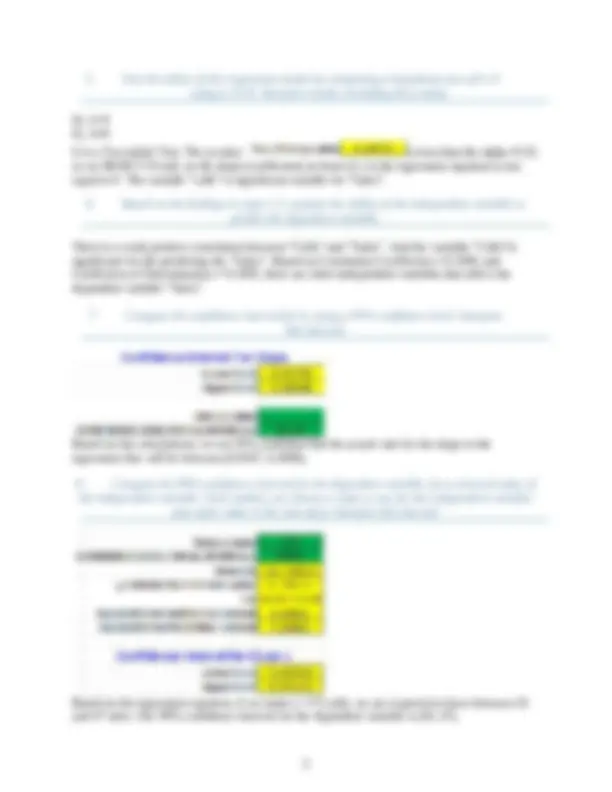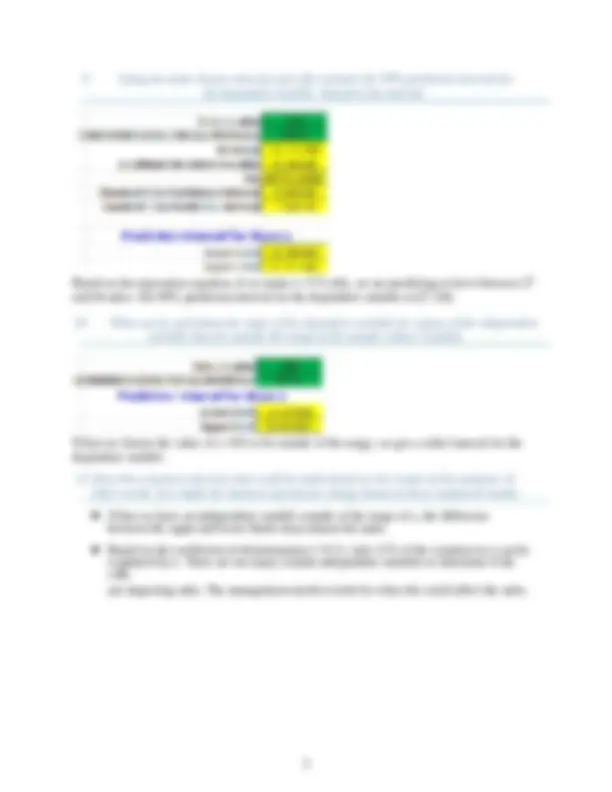




Study with the several resources on Docsity

Earn points by helping other students or get them with a premium plan


Prepare for your exams
Study with the several resources on Docsity

Earn points to download
Earn points by helping other students or get them with a premium plan
Community
Ask the community for help and clear up your study doubts
Discover the best universities in your country according to Docsity users
Free resources
Download our free guides on studying techniques, anxiety management strategies, and thesis advice from Docsity tutors
A comprehensive analysis of regression and correlation techniques applied to a real-world business scenario. It explores the relationship between the number of calls made and sales generated, utilizing scatterplots, regression equations, correlation coefficients, and hypothesis testing. The analysis aims to determine the predictive power of the independent variable (calls) on the dependent variable (sales) and identify potential factors influencing sales beyond the number of calls.
Typology: Assignments
1 / 4

This page cannot be seen from the preview
Don't miss anything!



Final Project: Regression and Correlation Analysis Brief Introduction For this regression analysis we will choose X1-calls as Independent Variable and Y-Sales as Dependent Variable. The reason behind it is because the correlation coefficient between Time and Years with Sales is weaker than Calls with Sales.